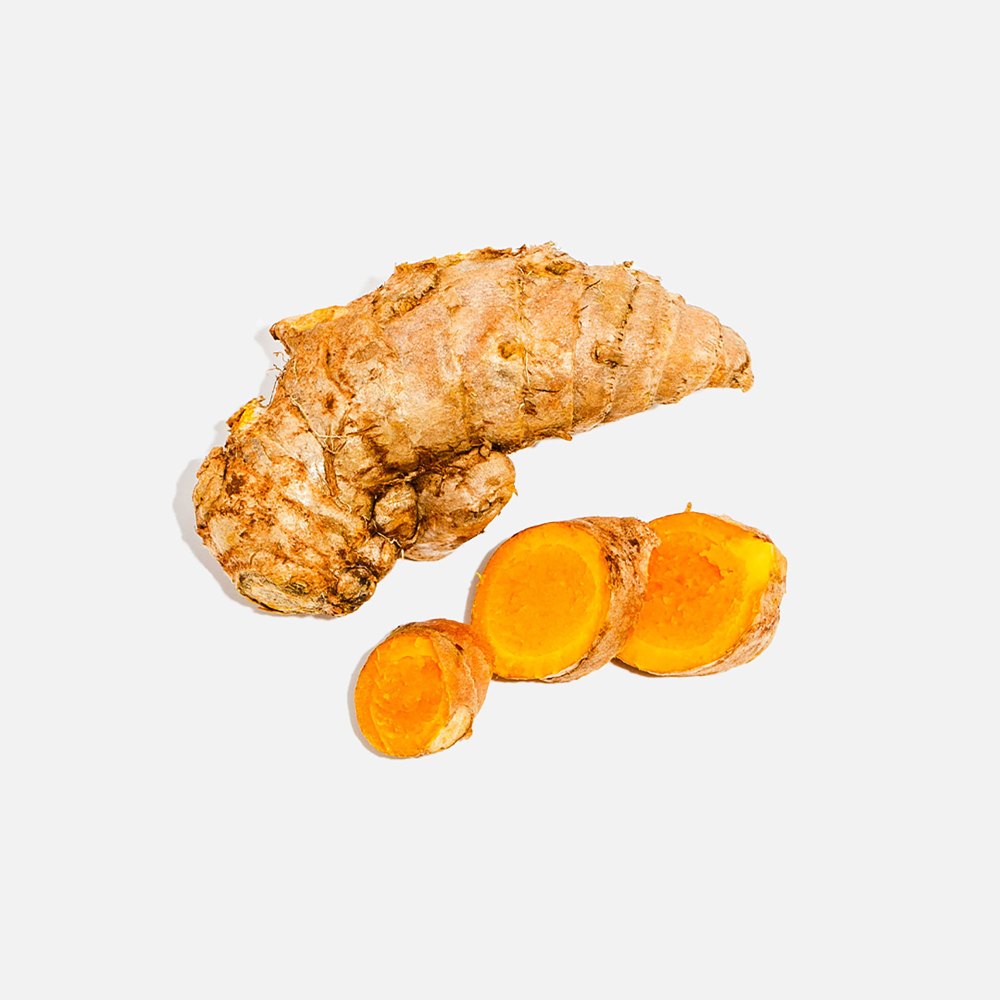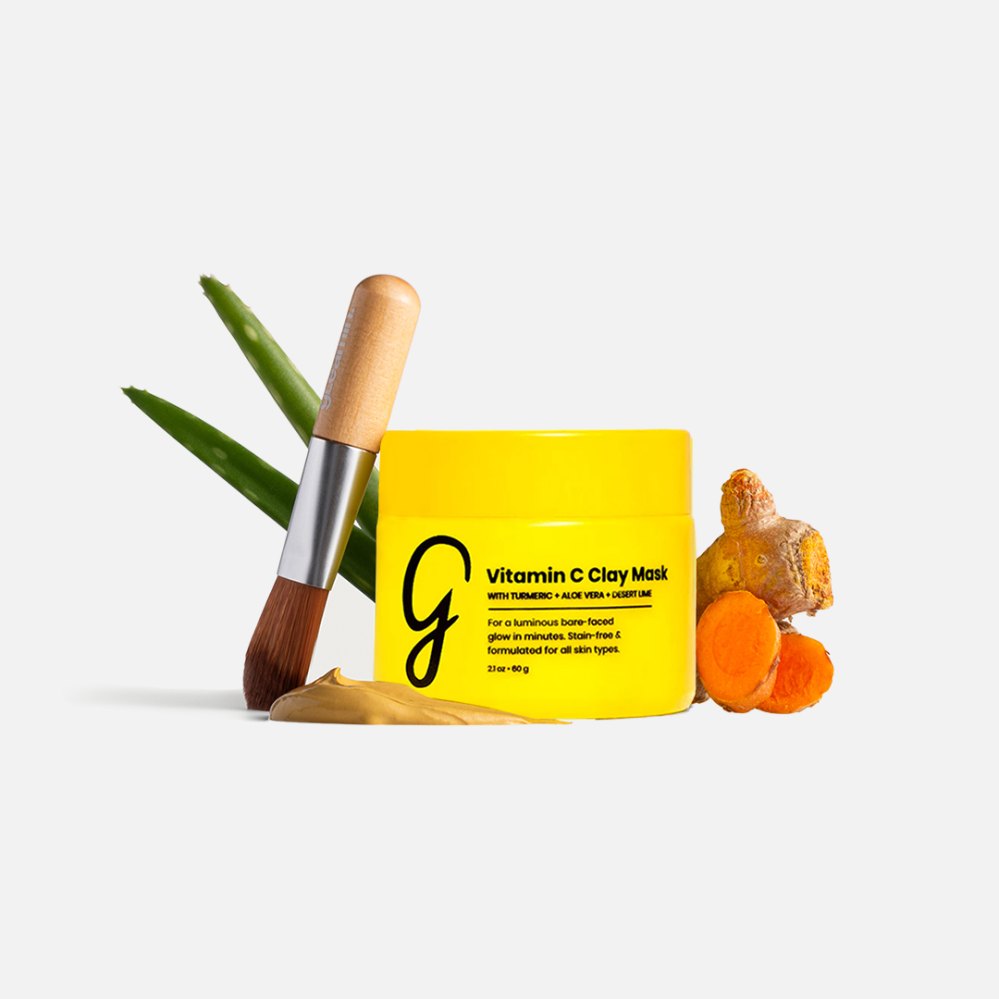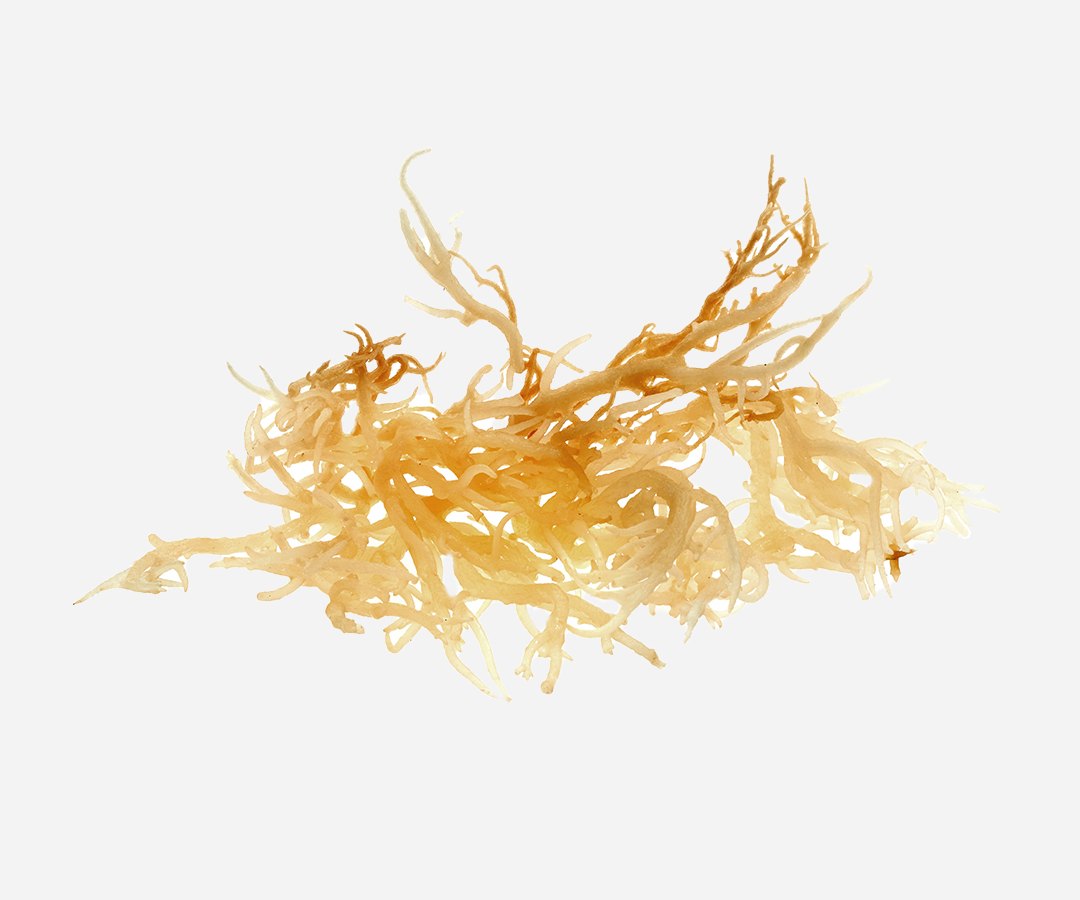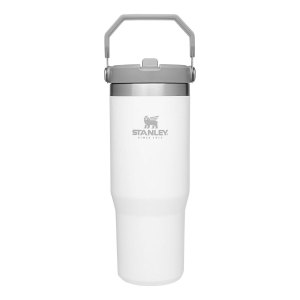Us Weekly has affiliate partnerships. We receive compensation when you click on a link and make a purchase. Learn more!
Reworking your skincare routine? You’re not alone.
These days, it feels like everyone we know is in deep when it comes to perfecting their multi-step cleanser, toner, and moisturizer regimen. From UV masks to skin rollers to face yoga, skincare has reached a new fever pitch.
As a part of that same phenomenon, people are starting to be more considerate about the ingredients in their skincare products. Skin is so absorbent, and the harsh chemicals found in many popular skincare lines can be harmful (if not outright dangerous) to our internal health, in addition to our external.
Welcome to the all-natural revolution. More and more products tout themselves as clean and vegan alternatives to skincare. Of those products, two ingredients seem to come up over and over again: turmeric and sea moss. But what is the difference between these two ingredients, and what can help us fight acne, acne scarring, and dark spots?
One of our most recommended facemasks, Gleamin’s Vitamin C facemask, includes a pretty potent amount of turmeric to help detoxify the skin and battle issues like acne scarring, dark spots, acne, and beyond.
In this article, we’ll break down what these ingredients can do for both your skin’s external appearance and internal health and get to the bottom of which one is more effective in helping you achieve clear and beautiful skin.
If you’re ready to see the benefits of turmeric for yourself, head over to Gleamin’s website today!
What Are the Benefits of Turmeric?
You might be familiar with turmeric ingredient in cooking, particularly in Indian dishes. Turmeric is a root spice, and it’s been used for well over six thousand years in everything from food to medicine to religious practice.
When it comes to its benefits, turmeric is similar to sea moss in that it is packed with nutritional value and contains natural antioxidant and antibacterial properties. Where it’s different is that these benefits are all seen in topical skincare solutions or oral supplements, depending on which one you prefer.
(Sea moss is beneficial as an oral supplement, but its topical powers are a little more dicey — but more on that later.)

Provides Glow and Luster to Skin
Because turmeric contains anti-inflammatory properties, there is strong evidence that it can help reduce redness and irritation, restoring brightness and balance to the face. Turmeric contains high levels of vitamin C, magnesium, and omega-3 fatty acids.
Turmeric contains the antioxidant curcumin, which can help rejuvenate the skin, slowing down the aging process and bringing luster back to the face. If you’re looking for glow, a little turmeric can go a long way.
Fights Acne
Like sea moss, turmeric helps manage the production of sebum. People who have dealt with difficult and frustrating acne for years swear by turmeric’s ability to heal acne and prevent new breakouts from coming. Turmeric does this by preventing cells from clumping together, reducing the number of clogged pores and, by effect, pimples.
Because of its antibacterial and antimicrobial properties, it can also battle bacterial acne and fungal imbalances, which can lead to bumps and blemishes in the skin complexion.
Evens Tone and Minimizes Scarring
All of these properties tend to lead to a similar result: a more even skin tone and complexion. Turmeric is especially known for its ability to fight hyperpigmentation and reduce the appearance of scars, sun spots, and dark spots.
Even difficult-to-remove acne scars are improved by turmeric. It really earns its superfood status.
Is Sea Moss Worth the Hype?
Sea moss is exactly what it sounds like: moss from the sea. It’s an algae found in tidepools along the coasts of North America and Europe. Sometimes referred to as Irish moss or Chondrus crispus, sea moss can range in color from yellow to purple to black.
There is evidence of people eating sea moss from as far back as the 1840s when famine plagued Ireland, and it was discovered that moss was especially nourishing, thanks to its nutritional properties.
Today, it’s a new and trendy supplement that people are now using in skincare products due to its buzzy status in the superfood world — but is it really worth the hype? Let’s explore the history and uses of sea moss to find out whether it’s as helpful as its fans claim.
Nutrients, Nutrients, Nutrients
Sea moss is a popular oral supplement since it’s packed with the nutrients that your skin craves. We tend to think of the skin as a neutral barrier, like a sort of wallpaper, but the truth is that our skin has a whole lot more going on than meets the eye.
The skin constitutes a microbiome, just like the one in your gut. It’s made up of a highly complex ecosystem of skin cells, bacteria, and fungi, all of which communicate and help the body shed hair and skin cells and produce new ones.
Because it’s just as ‘alive’ as your insides, the skin needs nourishment and nutrients to thrive. Sea moss contains lots of vitamins and minerals, including vitamins A, C, and E, iron, magnesium, and zinc. These vitamins and minerals all play a role in your skin’s health and balance. Vitamin C can help make the skin glowier, and zinc can help maintain the skin’s fungal levels so that they aren’t thrown out of whack.
But Will Sea Moss Really Get the Job Done?
While sea moss does have tons of uses thanks to its vitamin and mineral content, these are largely seen when sea moss is taken as an oral supplement.
While the skin benefits of sea moss still need to be studied further — there’s not a ton of research out there to confirm the skincare world’s helpful hunches — its plentiful nutrients make it a great oral supplement for your skin and overall wellness. But as a topical supplement? Not so much.
The better ingredient for topical skincare is turmeric. Topical sea moss products are more of an overhyped trend and less of a science-backed skincare solution. Meanwhile, turmeric is well-recognized for all of the skincare benefits that people claim you’ll get from sea moss, all in an easy and targeted topical treatment.
How Do Sea Moss and Turmeric Compare?
Now that we’ve gone over why both of these ingredients are great for skin health, let’s talk about which one works harder. While we all wish we had time for a 20-step skincare routine, the truth is that life is too busy for that. We need our products to be simple, easy, and, most importantly, effective.
So, between sea moss and turmeric, which one is the best for your skincare? There’s no doubt about it: Turmeric’s the winner.
Head over to Gleamin’s website today, and see all of turmeric’s benefits in action.

Vitamin C
Turmeric contains higher levels of Vitamin C. Comparing one ounce of each ingredient, sea moss contains 1% of the daily nutritional value of Vitamin C, while turmeric contains 2%. More Vitamin C means that turmeric contains more antioxidant power, working harder to reduce the effects of aging and damage.
Shelf Life
Turmeric also lasts longer. Sea moss has a shelf life of about a month, while turmeric can last for up to a year. While we all fall behind sometimes on ensuring our skincare products are still good, it’s nice to know that the window is longer with turmeric.
Storage Convenience
To that end, turmeric is far more convenient to store. Sea moss has to be kept in an air-tight container in a cool place like the fridge. Turmeric is more resilient and can be stored at room temperature.
Science
Perhaps most important, there is far more evidence that turmeric is beneficial for the skin and the body than sea moss. While research is growing for sea moss, turmeric has the backing of proven science and thousands of years of cosmetic and medicinal uses.
Topical Treatments
We’ve said it before, and we’ll say it again: Turmeric is the topical skin treatment people wish sea moss was. While sea moss is perfectly fine as an oral supplement, its an under-studied and over-hyped topical skincare ingredient. For topical skincare, turmeric takes the crown.
Designing Your Skincare Routine with Wellness in Mind
If you’re in the market for a new skincare product that can help even your complexion and balance your skin, we highly recommend seeking out natural ingredients.
When it comes to its hard-working antioxidant properties, nutritional value, and proven results, you can’t do much better than turmeric for your topical skincare needs. It reduces hyperpigmentation, balances the skin’s microbiome, and brings out your inner glow.
Need a recommendation? We can’t get enough of Gleamin’s Vitamin C mask.
Packed with turmeric and aloe vera, Gleamin’s facemask has an unbelievable ability to fight inflammation and blemishes. The before and after images of this mask have to be seen to be believed. From acne scars to dark sunspots to overall skin health, this Vitamin C mask is doing wonders for people with all different types of skin.





